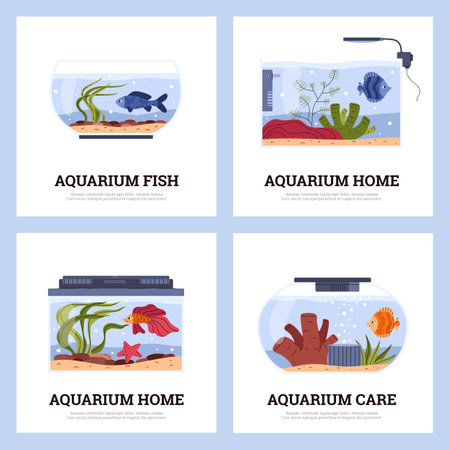1. Understanding Power Consumption in Indian Aquariums
For every desi fish keeper, knowing how much bijli (electricity) your aquarium uses is the first step to smart savings and safety. In Indian homes, a typical aquarium setup includes filters, heaters, and lighting systems. Each of these devices has its own power needs, but things get extra interesting because of our local factors like voltage fluctuations and load shedding. Filters usually run 24×7 and can consume anywhere between 5W to 20W depending on size and brand. Heaters are real power guzzlers—especially in North India during winters or South India’s cooler nights—sometimes drawing up to 100W for bigger tanks. Aquarium lights, especially if you have planted tanks or want your fishes’ colours to pop, can take another 10W to 40W per day depending on LED or traditional tube types. However, what makes the Indian context unique is our unstable electricity supply. Voltage fluctuation is common in many areas, which not only increases electricity usage but also puts your equipment at risk of damage or early burnout. Load shedding (planned or surprise power cuts) can interrupt the aquarium’s life support systems, stressing out your fish and possibly requiring additional backup solutions like UPS or inverter setups. By understanding this desi reality, you’ll be better prepared to make smart choices about equipment and daily routines that keep both your aquarium thriving and your bills under control.
2. Desi Jugaad for Cutting Electricity Bills
When it comes to running an aquarium at home, many Indians worry about rising electricity bills. But with some classic desi jugaad (local hacks), you can cut down your power usage without compromising your fish’s health or safety. Here are some practical, budget-friendly ideas inspired by Indian homes and markets:
Energy-Efficient LED Lights
Switching from traditional tube lights or incandescent bulbs to LED aquarium lights is a no-brainer. LEDs consume up to 80% less electricity and last longer, making them perfect for our pocket and the planet. Many Indian brands now offer affordable LED lights in local pet shops and online.
Comparison of Aquarium Lighting Options
| Type | Power Consumption | Average Lifespan | Availability in Local Market |
|---|---|---|---|
| Incandescent Bulb | 40-60W | 500-1,000 hours | Easily available, but outdated |
| Tube Light (CFL) | 15-30W | 6,000-8,000 hours | Common, moderate efficiency |
| LED Light | 7-15W | 20,000+ hours | Available in most urban markets & online |
Timer Plugs: Set It and Forget It
A timer plug is a fantastic jugaad that helps automate the switching on and off of your aquarium light and filter. Set the timer to turn off the equipment during daylight hours or when not needed—this simple trick can save several units of electricity each month. Timer plugs are easily available in Indian hardware stores and e-commerce sites like Flipkart and Amazon.
Low-Wattage Filters from Local Markets
Aquarium filters are essential but can be energy guzzlers if not chosen wisely. Opt for low-wattage filters made by Indian brands—they are designed to work efficiently even during voltage fluctuations common in many areas. Not only do these save electricity, but they also support local businesses!
Desi Power-Saving Tips at a Glance:
- Use reflective backgrounds or white tiles behind your aquarium to enhance lighting effect without extra bulbs.
- If possible, place your aquarium near a window (but out of direct sunlight) to use natural light during the day.
- Crowdsource advice from local fishkeepers’ WhatsApp groups or forums for best deals on efficient equipment in your city.
With these desi hacks, you can enjoy a beautiful aquarium while keeping your bijli (electricity) bills under control—total win-win for every Indian fish lover!

3. Selecting Budget-Friendly Equipment
When it comes to setting up an aquarium in India, choosing the right equipment can make a big difference not just for your fish, but also for your monthly electricity bill. Here are some desi tips for selecting affordable and energy-saving aquarium gear that fits the Indian lifestyle and wallet.
Look for Energy-Efficient Brands
Indian brands like Boyu, Resun, and Sunsun offer a wide range of filters, air pumps, and heaters that consume less power compared to imported alternatives. Always check the wattage before buying—lower wattage usually means lower electricity consumption. Many local brands now provide energy ratings or customer reviews mentioning power efficiency, so use this info while shopping.
Where to Buy in India?
D-Mart: Sometimes stocks basic aquarium supplies at budget prices, especially during sales or festive offers. While variety may be limited, you can often find standard heaters or air pumps here.
Amazon India: Offers a huge selection of both Indian and international brands. Use filters to sort by price, wattage, and customer ratings. Look out for “Amazon’s Choice” or “Best Seller” tags on products with good energy efficiency.
Local Pet Shops: Don’t underestimate your neighbourhood pet store! Many stock locally-assembled aquarium kits that are both affordable and efficient. Plus, you get personalised advice from shopkeepers who understand local needs and can recommend what works best in Indian homes.
Desi Pro Tip
Always compare prices across these platforms before making a purchase. Sometimes local shops are open to bargaining or offer freebies like fish food or water conditioners with your equipment. Also, ask fellow hobbyists on WhatsApp groups or Facebook communities for their tried-and-tested brand recommendations specific to your city or region.
By choosing wisely and sourcing from the right places, you can set up an efficient aquarium system that keeps both your fish happy and your electricity bill under control—the true Indian jugaad way!
4. Managing Aquarium Placement for Savings
When it comes to saving electricity in your aquarium, where you place your tank makes a huge difference—especially with the diverse and sometimes extreme Indian climate. In many Desi homes, temperatures can fluctuate drastically between seasons. Proper placement of your aquarium can help regulate its temperature naturally, reducing the workload on heaters and coolers, and ultimately cutting down your energy bills.
Choosing the Right Spot in Your Home
Always avoid putting your aquarium near windows where direct sunlight falls, as this can cause water temperature to rise quickly during the day, especially during Indian summers. Similarly, placing your tank close to doors or balconies exposes it to drafts or sudden changes in temperature, which forces your heater or cooler to work harder.
Comparison Table: Aquarium Placement & Its Impact
| Placement Spot | Temperature Stability | Heater Usage | Electricity Consumption |
|---|---|---|---|
| Near Window (Direct Sunlight) | Poor | High (in winter), Low (summer) | High |
| Close to Door/Balcony | Poor (due to drafts) | Moderate to High | High |
| Interior Wall (Away from Appliances) | Good | Low to Moderate | Low |
| Near Kitchen/Heat Source | Poor (too warm) | Low (heater), High (cooler/fan) | High |
| Shaded Corner, Well Ventilated Room | Excellent | Minimal/Optimal | Lowest |
Desi Pro Tip:
If you live in a city like Mumbai or Chennai with high humidity and heat, keep your tank away from external walls that get hot during the day. In northern areas like Delhi or Jaipur where winters are harsh, an interior spot away from cold drafts is ideal. Simple adjustments like using curtains or blinds during peak sun hours can also make a big difference in controlling indoor temperatures naturally.
By being mindful of aquarium placement in your home according to local weather patterns and house structure, you can significantly cut down on electricity costs while keeping your aquatic friends comfortable and safe.
5. Water Changes and Cleaning with Minimum Power Use
When it comes to aquarium maintenance, many of us Desis remember how our elders managed fish tanks without fancy equipment. Instead of using electric gravel vacuums or powered filters for cleaning, go back to basics with simple siphons and hand tools. Siphons are pocket-friendly and dont need electricity; they work purely on gravity and can easily remove waste and old water from the tank. Pair this method with a traditional bucket – something every Indian home has – and you have an eco-friendly, effective cleaning solution.
For scrubbing algae off the glass or decorations, ditch battery-operated scrubbers. Use an old toothbrush or a basic sponge (reserved only for your tank). This not only saves on power but also lets you control the cleaning process more precisely, reaching tight corners and delicate plants. Many experienced aquarists in India swear by neem leaves or pieces of coconut shell to naturally discourage algae growth and keep water fresher for longer.
Make it a routine to change 10-20% of your tank’s water weekly using these manual methods. This keeps your aquatic friends healthy without putting extra load on your electricity bill. Remember, patience is key — manual cleaning takes a bit more time but is cost-effective and environmentally friendly.
Finally, always unplug any electrical appliances before starting water changes to avoid shocks. After you’re done, double-check all equipment is dry before plugging back in. With these Desi practices, you save energy, money, and ensure your aquarium remains a safe environment for both fish and family.
6. Electrical Safety Measures for Indian Homes
Desi aquarists know that Indian homes face unique electrical challenges, especially during monsoon season. Power surges, short circuits, and frequent voltage fluctuations can put both your aquarium and your home at risk. Here are some important steps every fish lover should follow to ensure safety and peace of mind.
Use Quality Surge Protectors
Invest in a reliable surge protector or spike guard for your aquarium equipment. Sudden voltage spikes are common in India, particularly during thunderstorms or power cuts. A good surge protector will shield your aquarium heaters, filters, and lights from unexpected surges that could otherwise lead to equipment failure or fire hazards.
Proper Earthing is Must
Many Indian homes suffer from poor earthing, which increases the risk of electric shocks and short circuits. Always make sure your electrical outlets have proper grounding before plugging in any aquarium devices. If unsure, call a licensed electrician to check and upgrade your earthing system if needed—this small investment can save lives and prevent property damage.
Opt for Insulated Plugs & Sockets
Humidity during the monsoon months can cause moisture to seep into sockets and plugs, increasing the risk of electric shock. Always use insulated plugs and waterproof socket covers for all aquarium equipment. This simple desi jugaad keeps both your home and aquatic pets safe from accidental shocks.
Keep Wires Organised & Elevated
Avoid the typical desi mess of tangled wires on the floor near water. Use cable organisers to keep wires tidy and always elevate them above ground level, especially if your aquarium is placed in a room prone to water leakage or flooding during heavy rains.
Regular Maintenance Checks
No matter how good your setup is, regular checks are essential. Inspect all cables, plugs, and devices for wear and tear every few months. Replace damaged parts immediately—a stitch in time saves nine! By following these practical tips, you’ll not only protect your aquatic friends but also ensure the safety of your family and home.

